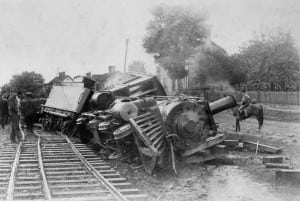EPA’s Greenhouse Plan and Reliability: Train Wreck?
Congress passed the Clean Air Act in 1990. The key to the 1990 amendments, and the previous versions of the air law, was state implementation of federal requirements. State regulators would implement the federal requirements on state-regulated electric companies.
In 1992, Congress passed the Energy Policy Act, which started a major transformation in the electricity industry. That process ultimately resulted in the industry we see today, with most of the nation’s generation and transmission controlled by regional entities that transcend state control. That’s now the Federal Energy Regulatory Commission’s territory.
With the Obama administration trying a maneuver to control greenhouse gases in the absence of Congressional action, the air act and the realities of today’s electric system are on a collision course. It’s called the Clean Power Plan. It is a case of incompatible laws clashing.
While the Supreme Court has said the administration can use the air law as a basis for regulating greenhouse gases, that does not mean the administration’s approach is practical. It looks increasingly unwieldy and unworkable. The EPA’s state-by-state approach and the realities of how electricity is generated and moved across state borders look irreconcilable.
Breaking with FERC tradition – a positive move in my view – the two Republicans on the commission, Philip Moeller and Tony Clark, both sent comments to EPA on its draft plan. Moeller said, “I am concerned that the costs of the CPP could total hundreds of billions of dollars. But my primary concern relates to the implications of the CPP on the reliability of the nation’s electricity system.”
Both Moeller and Clark called for a more formal relationship between EPA and FERC, which so far has only been at the staff level. Clark said that “if you’ve got a state that has a couple of interstate utilities that are operating in other states and maybe in two different [independent system operator] markets, there’s got to be somebody who takes a look at it from the 20,000-foot level and can say, ‘Wait a second, what you’re telling these utilities to do over here doesn’t work over there, and it’s going to cause reliability problems.’ I don’t think EPA has that technical ability to do it.”
Virtually every participant in the industry, from investor-owned utilities to public power to non-utility generators, to state regulators, to the ISOs, to the North American Electric Reliability Corp. have warned EPA that its plan has serious unintended consequences for grid reliability. EPA must walk very cautiously into that thicket, as major blackouts or skyrocketing electric rates resulting from the greenhouse gas rules would cause a political firestorm far greater than what accompanied the rollout of the Affordable Care Act.
My friend and colleague Robert Marritz at ElectricityPolicy.com has suggested that EPA do an about face and come up with a regional regulatory approach. “The plan as proposed,” he writes, “does not preclude a regional approach, but it does not offer a clear path to pursue one, or an incentive for the many players—generators, state regulatory agencies, state energy agencies, and state environmental agencies—to seriously consider the option. Doing so could take more time and could run into the issue of state-by-state bargaining within a regional envelope. But we believe it has the potential to be more effective, save precious billions, and cause less pain and dislocation overall.”
While laudable, that regional approach runs into the barriers in the Clean Air Act, which relies on state implementation plans as the administrative tool for compliance. FERC’s Tony Clark said, “It would either have to be Congress stepping in and telling EPA you have to coordinate with FERC or it would be EPA on their own building into the rule an ability for FERC to inform the process.”
While the best choice would be for Congress to weigh in, the current political environment renders that impossible. EPA’s ability to bring FERC into the process may be limited by the constraints of the 1990 air law.
Train wreck?
